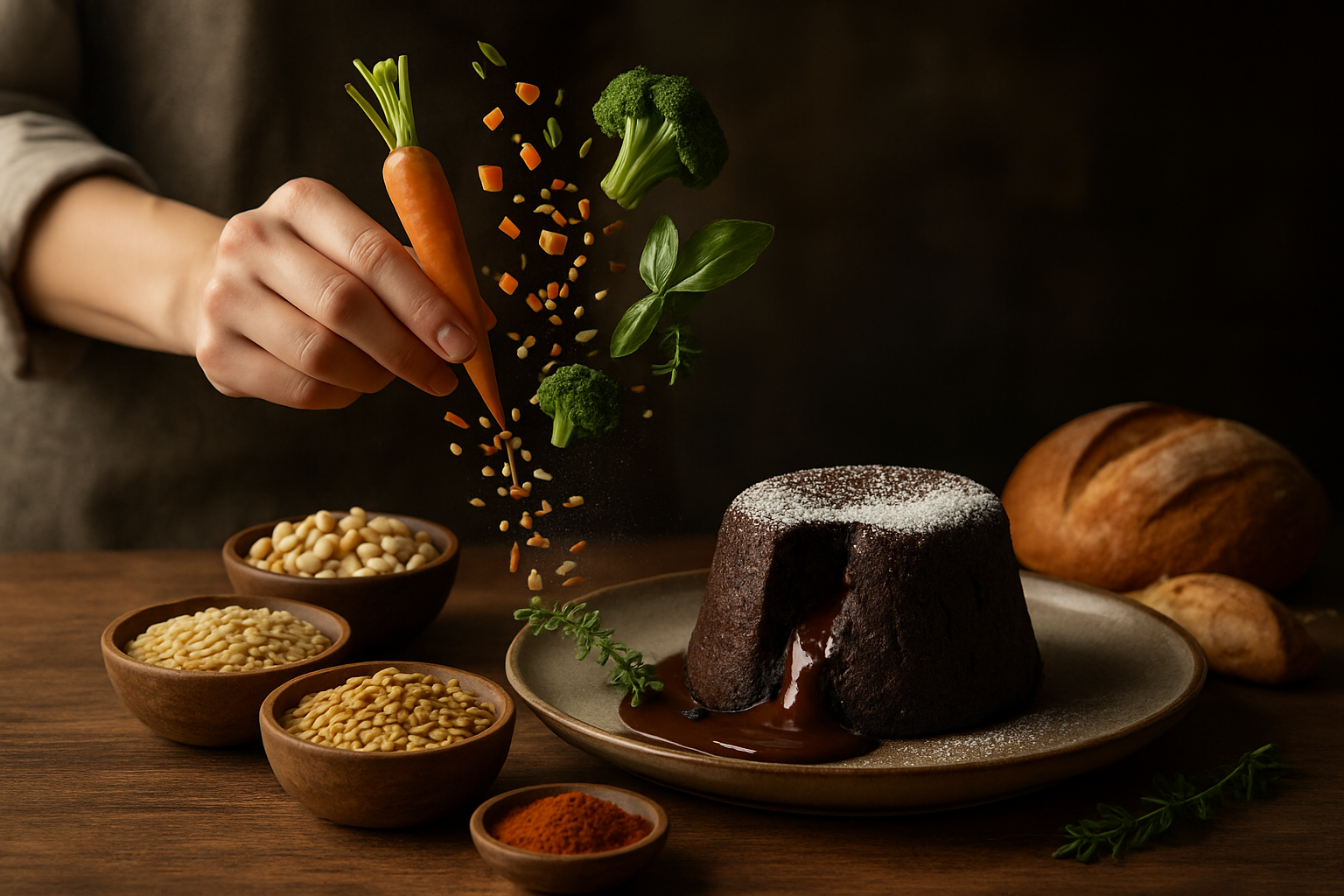Culinary Alchemy: Transforming Leftovers into Gourmet Delights
Unlock the secret to turning mundane leftovers into mouthwatering masterpieces. This culinary adventure explores innovative techniques and creative recipes that breathe new life into yesterday's meals, reducing food waste while tantalizing your taste buds.

Elevating Leftover Proteins
Leftover proteins offer a world of possibilities for creating new and exciting dishes. Take that forgotten roast chicken and shred it to create a flavorful base for a hearty chicken pot pie or a zesty chicken salad with a twist. Add some Asian-inspired flair by tossing the shredded chicken with soy sauce, sesame oil, and fresh herbs for a quick and easy lettuce wrap filling. For leftover steak, slice it thinly and use it to top a gourmet pizza with caramelized onions and blue cheese. Transform leftover fish into elegant croquettes by mixing it with mashed potatoes, herbs, and a touch of lemon zest before breading and frying to golden perfection. The key is to think beyond simply reheating and instead focus on incorporating new flavors and textures to breathe life into your leftovers.
Reinventing Leftover Grains and Pasta
Leftover grains and pasta serve as excellent foundations for creating entirely new meals. Transform yesterday’s plain rice into a vibrant and flavorful fried rice by adding vegetables, eggs, and your choice of protein. For a Mediterranean twist, toss cold pasta with sun-dried tomatoes, olives, feta cheese, and a drizzle of olive oil for an instant pasta salad. Leftover quinoa can be mixed with black beans, corn, and avocado for a protein-packed burrito bowl. Get creative with risotto by shaping cold leftovers into balls, stuffing them with mozzarella, and frying them to create indulgent arancini. These transformations not only save time but also introduce exciting new flavors and textures to your meal rotation.
Vegetable Makeovers
Leftover vegetables are often the most challenging to repurpose, but with a little creativity, they can become the stars of your next meal. Blend roasted vegetables with stock and cream to create a luxurious soup, or puree them into a flavorful dip. Transform leftover roasted vegetables into a colorful frittata or quiche filling. For a quick and easy side dish, toss cold vegetables with a tangy vinaigrette and serve them as a refreshing salad. Leftover mashed potatoes can be transformed into crispy potato cakes or used as a topping for a shepherd’s pie. By thinking outside the box, you can turn even the most humble leftover vegetables into exciting new culinary creations.
Sweet Endings: Desserts from Leftovers
Even desserts can be created from leftovers, offering a sweet finale to your culinary recycling efforts. Stale bread becomes the perfect base for a rich bread pudding or a decadent French toast casserole. Overripe fruits can be transformed into a rustic galette or blended into a refreshing sorbet. Leftover rice serves as the foundation for a creamy rice pudding, while excess cake can be crumbled and layered with cream and fruit for an elegant trifle. These dessert transformations not only reduce waste but also provide a delightful end to your meal, proving that even the sweetest treats can emerge from yesterday’s leftovers.
Useful Tips & Facts
• Always store leftovers properly to maintain freshness and food safety.
• Get creative with spices and sauces to completely transform the flavor profile of leftovers.
• Invest in quality food storage containers to keep leftovers organized and easily accessible.
• Plan your meals with leftovers in mind, considering how each dish can be repurposed.
• Freezing leftovers in individual portions makes for easy future meals.
• Remember the “2-hour rule”: refrigerate leftovers within 2 hours of cooking to prevent bacterial growth.
• Use leftover vegetables and meat scraps to make homemade stock for future recipes.
• Challenge yourself to a “zero waste” week by creatively using all leftovers.
Conclusion
Transforming leftovers into gourmet delights is not just about reducing waste; it’s about unleashing your culinary creativity and discovering new flavors. By viewing leftovers as ingredients full of potential rather than as remnants of past meals, you open up a world of culinary possibilities. This approach not only saves time and money but also challenges you to become a more innovative and resourceful cook. Embrace the art of leftover reimagination and turn your kitchen into a laboratory of flavors, where yesterday’s meals become tomorrow’s culinary masterpieces.





